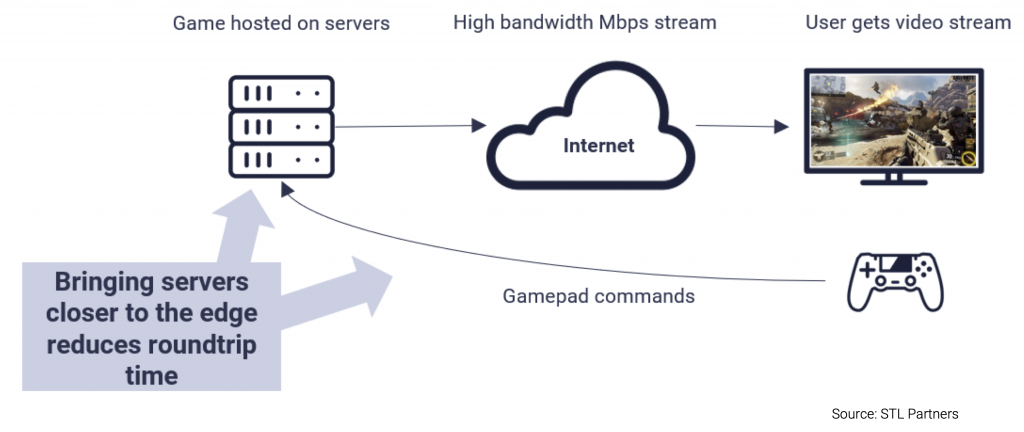
10 Edge computing use case examples
Edge computing brings processing and storage capabilities closer to where it is needed. Why is this important, and which industries can benefit the most?
STL Partners has a bespoke research service focused on helping those within the edge ecosystem understand edge use cases . Discover the best edge monetisation opportunities, understand the key partners, and inform your go-to-market strategy through our Edge Use Case Directory here.
There are far too many examples of edge computing use cases to list here, so we’ve chosen 10 important ones below:
1. Autonomous vehicles
Autonomous platooning of truck convoys will likely be one of the first use cases for autonomous vehicles. Here, a group of truck travel close behind one another in a convoy, saving fuel costs and decreasing congestion. With edge computing, it will be possible to remove the need for drivers in all trucks except the front one, because the trucks will be able to communicate with each other with ultra-low latency.

2. Remote monitoring of assets in the oil and gas industry
Oil and gas failures can be disastrous. Their assets therefore need to be carefully monitored.
However, oil and gas plants are often in remote locations. Edge computing enables real-time analytics with processing much closer to the asset, meaning there is less reliance on good quality connectivity to a centralised cloud.
3. Smart grid
Edge computing will be a core technology in more widespread adoption of smart grids and can help allow enterprises to better manage their energy consumption.
Sensors and IoT devices connected to an edge platform in factories, plants and offices are being used to monitor energy use and analyse their consumption in real-time. With real-time visibility, enterprises and energy companies can strike new deals, for example where high-powered machinery is run during off-peak times for electricity demand. This can increase the amount of green energy (like wind power) an enterprise consumes.
4. Predictive maintenance
Manufacturers want to be able to analyse and detect changes in their production lines before a failure occurs.
Edge computing helps by bringing the processing and storage of data closer to the equipment. This enables IoT sensors to monitor machine health with low latencies and perform analytics in real-time.
5. In-hospital patient monitoring
Healthcare contains several edge opportunities. Currently, monitoring devices (e.g. glucose monitors, health tools and other sensors) are either not connected, or where they are, large amounts of unprocessed data from devices would need to be stored on a 3rd party cloud. This presents security concerns for healthcare providers.
An edge on the hospital site could process data locally to maintain data privacy. Edge also enables right-time notifications to practitioners of unusual patient trends or behaviours (through analytics/AI), and creation of 360-degree view patient dashboards for full visibility.
6. Virtualised radio networks and 5G (vRAN)
Operators are increasingly looking to virtualise parts of their mobile networks (vRAN). This has both cost and flexibility benefits. The new virtualised RAN hardware needs to do complex processing with a low latency. Operators will therefore need edge servers to support virtualising their RAN close to the cell tower.
7. Cloud gaming
Cloud gaming, a new kind of gaming which streams a live feed of the game directly to devices, (the game itself is processed and hosted in data centres) is highly dependent on latency.
Cloud gaming companies are looking to build edge servers as close to gamers as possible in order to reduce latency and provide a fully responsive and immersive gaming experience.

8. Content delivery
By caching content – e.g. music, video stream, web pages – at the edge, improvements to content deliver can be greatly improved. Latency can be reduced significantly. Content providers are looking to distribute CDNs even more widely to the edge, thus guaranteeing flexibility and customisation on the network depending on user traffic demands.
9. Traffic management
Edge computing can enable more effective city traffic management. Examples of this include optimising bus frequency given fluctuations in demand, managing the opening and closing of extra lanes, and, in future, managing autonomous car flows.
With edge computing, there is no need to transport large volumes of traffic data to the centralised cloud, thus reducing the cost of bandwidth and latency.
10. Smart homes
Smart homes rely on IoT devices collecting and processing data from around the house. Often this data is sent to a centralised remote server, where it is processed and stored. However, this existing architecture has problems around backhaul cost, latency, and security.
By using edge compute and bringing the processing and storage closer to the smart home, backhaul and roundtrip time is reduced, and sensitive information can be processed at the edge. As an example, the time taken for voice-based assistant devices such as Amazon’s Alexa to respond would be much faster.
10 Edge Computing Use Case Examples
| Use Case | Brief Description |
|---|---|
| Autonomous Vehicles | Edge computing enables autonomous platooning of truck convoys, potentially eliminating the need for drivers in all trucks except the front one. |
| Remote Monitoring of Oil and Gas Assets | Enables real-time analytics with processing closer to the remote asset, reducing reliance on connectivity to a centralised cloud. |
| Smart Grid | Aids in managing energy consumption by enabling real-time visibility of energy use and analysis of consumption. |
| Predictive Maintenance | Brings processing and storage of data closer to the equipment, allowing for real-time health monitoring and analytics. |
| In-Hospital Patient Monitoring | Edge computing on-site provides data privacy, real-time notifications to practitioners, and comprehensive patient dashboards. |
| Virtualised Radio Networks and 5G (vRAN) | Enables complex processing with low latency for virtualised RAN hardware. |
| Cloud Gaming | Cloud gaming companies are using edge servers to reduce latency and improve the gaming experience. |
| Content Delivery | Improves content delivery by caching content at the edge, significantly reducing latency. |
| Traffic Management | Edge computing allows effective city traffic management, optimizing bus frequency, lane usage, and future autonomous car flows. |
| Smart Homes | Bringing processing and storage closer to the smart home can improve performance and security of smart home IoT devices. |
These are just a few of many the use cases edge computing enables across multiple industries. At STL Partners, we are looking to help companies with their edge computing strategy. For a comprehensive guide to edge computing in 2020, we encourage you to look at our Edge Use Case Directory.
Author: Nikolai Siersted is a Consultant at STL Partners. He is part of STL’s Edge Computing Practice and has worked on a range of a client projects, with a focus on edge and 5G.
Read more about edge computing
Edge computing market overview
This 33-page document will provide you with a summary of our insights from our edge computing research and consulting work:
Edge Use Case Directory – Update
At STL Partners, our Edge Use Case Directory documents the top 50 use cases we have encountered across our work. We are constantly updating this to reflect the use cases which are garnering the greatest demand, and we have recently introduced three innovative use cases: High Frequency Trading (HFT), Smart ATMs and Sustainability Monitoring/Mapping. These cutting-edge applications highlight how edge computing is driving rapid transformation in financial transactions, banking security, and environmental surveillance
Edge computing in sports: use cases at the 2022 FIFA World Cup and beyond
From real time player tracking to wearable technology and enhanced fan experiences, edge computing is rapidly moving into the mainstream within the sporting world. In this article, we deep dive four examples of how a theoretical use case has been spun into a live deployment, both at the World Cup to across the sporting world.
AWS & Edge computing: Wavelength use cases and applications
AWS, together with telecoms partners like Vodafone and Verizon, has deployed Wavelength locations across the UK and the US.




